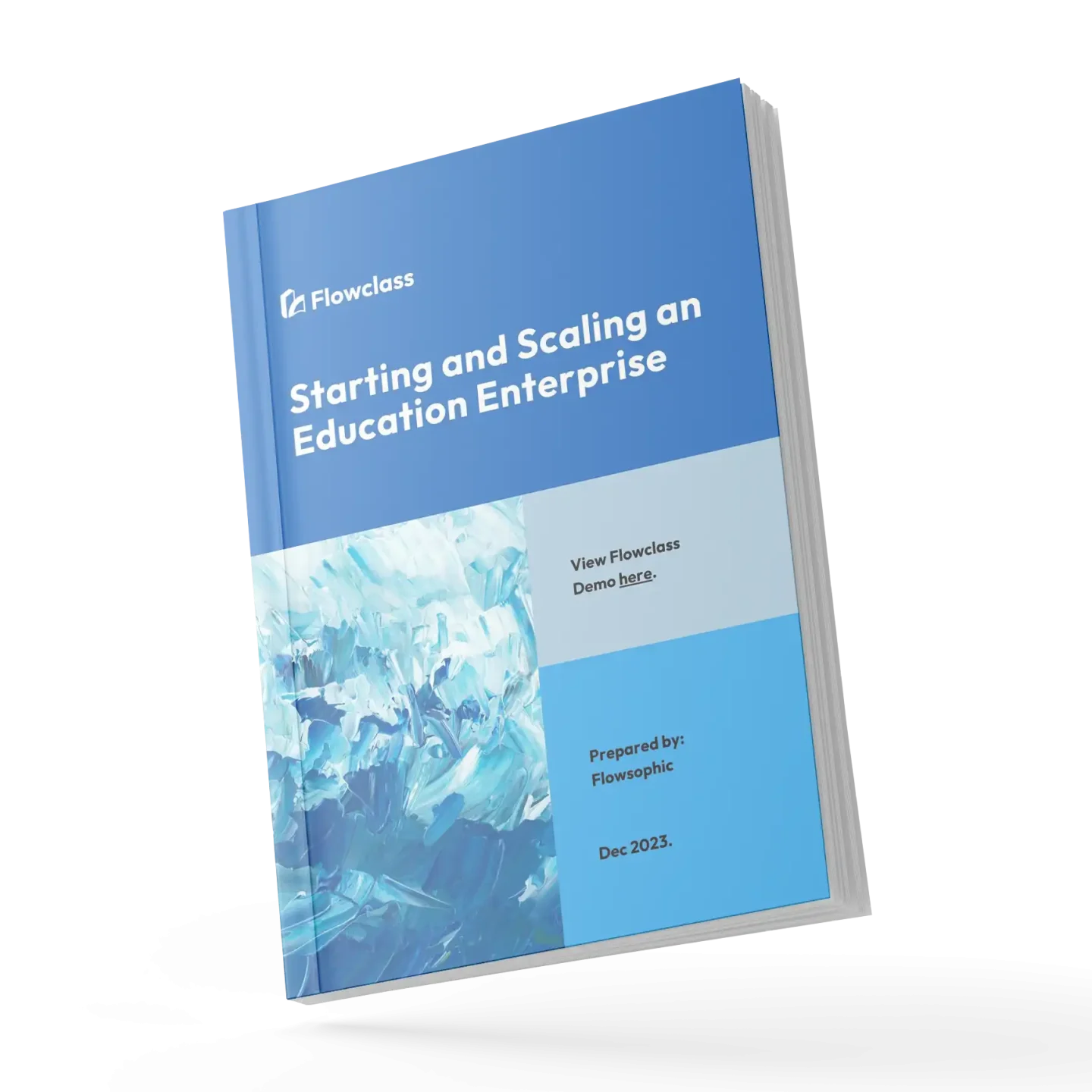A student management system is an essential tool for educational institutions looking to streamline administrative tasks, improve communication, and enhance the learning experience. With schools and colleges handling a large volume of data daily, such systems play a crucial role in managing student records, attendance, grades, and more. As institutions grow and evolve, the need for an efficient system becomes more critical to ensure operational efficiency.

What is a Student Management System?
A student management system (SMS) is a software platform designed to help educational institutions manage student information efficiently. It integrates various administrative functions, such as enrollment, attendance tracking, and grade management, into a single cohesive system. This not only reduces the workload for administrators but also ensures that information is accurate and accessible. Additionally, a well-implemented system can improve the overall organization and productivity of staff, enhancing the educational environment.
Core Features of a Student Management System
An effective student management system offers several key features that contribute to the smooth functioning of educational institutions:
- Student Information Management
- Maintains detailed records of student personal information, enrollment status, and academic history. This data can be easily retrieved and updated, ensuring that the institution always has the latest information on hand.
- Attendance Tracking
- Automates the process of recording student attendance and generates reports that help in identifying attendance trends. Accurate attendance tracking is essential for compliance and helps in early identification of absenteeism issues.
- Grade Management
- Facilitates the recording, calculation, and reporting of student grades. It simplifies the grading process, making it easier for teachers to focus on instruction and feedback.
- Communication Tools
- Provides communication channels for teachers, students, and parents through notifications, messages, and alerts. Effective communication fosters better relationships and ensures that important updates reach all stakeholders.
- Fee Management
- Streamlines fee collection, billing, and receipt generation, reducing manual effort and errors. It also provides transparency for parents and guardians, making fee payments and tracking hassle-free.
- Reporting and Analytics
- Generates detailed reports on various metrics such as student performance, attendance, and financial data. Institutions can use these reports to make informed decisions and improve overall performance.

Benefits of Using a Student Management System
Implementing a student management system offers numerous advantages for schools and colleges. Let’s explore some of the primary benefits:
1. Enhanced Data Accuracy
By automating data entry and record-keeping, a student management system reduces human errors, ensuring that student data is accurate and up-to-date. This level of accuracy is crucial for maintaining institutional credibility and complying with educational regulations.
For Example:
University of California, Berkeley integrated PeopleSoft Campus Solutions (a leading student information system) to manage its vast student data efficiently. The result? A significant drop in data inconsistencies and administrative errors across departments, improving reporting and compliance at the state level.
2. Improved Administrative Efficiency
Administrative tasks that were once time-consuming can be completed more quickly with a student management system, allowing staff to focus on more strategic initiatives. Platforms like Flowclass significantly reduce paperwork and manual workload.
For Example:
Ngee Ann Polytechnic in Singapore implemented a centralized digital system to streamline student services and administrative tasks. Using an integrated student platform, the school automated class scheduling, registration, and course tracking—freeing up countless hours for staff and enabling faster student onboarding.
3. Better Communication
Student management systems enable seamless communication between teachers, students, and parents—keeping everyone informed about progress, events, and updates. This leads to improved engagement and stronger academic outcomes.
For Example:
St. Paul’s Convent School in Hong Kong uses an all-in-one system to notify parents of events, homework, and test results through push notifications and emails. This helped boost parent-teacher communication, leading to a more engaged school community and increased parent satisfaction.
4. Real-Time Information Access
Students and parents can access real-time data on attendance, grades, and schedules, fostering transparency and accountability. Cloud-based platforms like Flowclass provide 24/7 accessibility, essential for today’s mobile-first world.
For Example:
Western Sydney University implemented an open-source student platform called MyWestern to give students mobile access to grades, class schedules, and academic resources. This led to higher student satisfaction scores and reduced inquiries to student support centers.
5. Cost and Time Savings
Automating repetitive processes like fee collection, attendance, and grading saves both time and money. These savings can then be reinvested into improving student services and academic programs.

How a Student Management System Enhances Learning
Implementing a Student Management System (SMS) not only streamlines administrative tasks but also significantly enhances the learning environment. By reducing paperwork, integrating with learning management platforms, and facilitating personalized education, SMS allows educators to focus more on teaching. Here are some key ways an SMS contributes to educational growth, illustrated with real-world examples from Hong Kong and Singapore:
Personalized Learning Paths
With detailed student data readily available, teachers can create personalized learning paths based on individual strengths and weaknesses. This tailored approach helps students achieve better academic results and fosters a supportive learning environment.
Example: Nanyang Primary School, Singapore
Nanyang Primary School implemented a gamified learning platform called ClassDojo to enhance student engagement and personalize learning experiences. ClassDojo allowed teachers to assign points for positive behaviors and track individual student progress, leading to increased motivation and improved learning outcomes. FasterCapital
Progress Monitoring
SMS enables teachers to continuously monitor student progress and intervene early when they notice any signs of academic struggle. Intuitive dashboards and progress reports provide real-time insights into student performance.
Example: International College Hong Kong
International College Hong Kong adopted Gibbon, an open-source school management system, to manage multi-site records and monitor student progress effectively. The system’s flexibility allowed for tailored tracking of student achievements, facilitating timely interventions and support. Opensource.com
Parental Involvement
Parents can stay updated on their child’s performance, attendance, and activities through the system, promoting greater involvement in the educational process. User-friendly portals ensure that parents are always informed and engaged.
Example: Bluetree Education Centre, Singapore
Bluetree implemented an Education Management System to streamline administrative processes and improve communication among teachers, students, and parents. The centralized platform facilitated better parental involvement by providing real-time updates on student performance and school activities. flavorcrm.com
Administrative Efficiency Leading to Growth
By automating administrative tasks, educational institutions can allocate more resources to teaching and learning, thereby supporting growth and expansion.
Example: Dancepointe Academy, Singapore
Dancepointe implemented an Education Management System to enhance administrative processes and improve student engagement. The system’s customization and integration facilitated streamlined operations, contributing to the academy’s growth and scalability. flavorcrm.com
How Flowclass Helps Educational Institutions
Flowclass is a modern, cloud-based student management system designed to cater to the dynamic needs of educational institutions. It provides an all-in-one solution that integrates various administrative functions, offering an intuitive and user-friendly platform for managing student data. Flowclass stands out for its flexibility and robust feature set, making it an ideal choice for institutions of all sizes.
Key Benefits of Flowclass
- Seamless Data Management
- Flowclass ensures accurate and efficient data management, reducing manual work and minimizing errors. The system’s user-friendly interface allows staff to manage data effortlessly.
- Comprehensive Reporting Tools
- The platform offers advanced reporting and analytics features, providing insights into student performance, attendance, and fee collection. These reports help institutions make data-driven decisions and improve operational efficiency.
- Enhanced Communication
- Flowclass includes built-in communication tools that allow instant notifications and updates, fostering better collaboration between teachers, students, and parents. This feature enhances engagement and ensures that critical information reaches the right audience promptly.
- Scalable and Secure
- Whether you run a small school or a large institution, Flowclass can scale according to your requirements while maintaining top-notch data security. The platform uses advanced encryption methods to protect sensitive information.
- Mobile Accessibility
- With mobile-friendly access, Flowclass enables users to stay connected and informed on the go. This flexibility ensures that students, parents, and staff can access critical information anytime, enhancing convenience.
Real-Time Updates and Transparency
Flowclass allows parents and students to access real-time updates on academic progress, attendance, and upcoming events. This feature ensures transparency and keeps all stakeholders informed. The system’s real-time capabilities help institutions maintain a high level of engagement and trust.

Choosing the Right Student Management System
Selecting the right student management system for your institution requires careful consideration of various factors. Here are some aspects to evaluate:
1. Scalability
Ensure that the system can grow with your institution’s needs. Whether you have 100 or 10,000 students, the system should handle the data efficiently. Flowclass offers a highly scalable solution that grows with your institution.
2. User-Friendliness
A user-friendly interface is crucial for smooth adoption by administrators, teachers, students, and parents. Flowclass’s intuitive design ensures that users can quickly learn and navigate the system.
3. Integration Capabilities
Look for a system that can integrate with other software solutions used by your institution, such as learning management systems and financial platforms. Flowclass provides seamless integration with various third-party tools, enhancing overall functionality.
4. Data Security
Since the system handles sensitive student data, robust security measures should be in place to protect against data breaches. Flowclass prioritizes data security with encryption, multi-factor authentication, and regular security updates.
5. Support and Training
Opt for a provider that offers excellent customer support and comprehensive training to ensure that your staff can use the system effectively. Flowclass provides dedicated support and training resources to ensure smooth implementation and usage.
The Future of Student Management Systems
The future of student management systems is promising, with advancements in technology opening up new possibilities. Here are some trends to watch:
1. Artificial Intelligence (AI)
AI can enhance SMS by providing predictive analytics, automating repetitive tasks, and offering personalized recommendations for students. Flowclass is already exploring AI-driven features to stay ahead of the curve.
2. Mobile Integration
With the increasing use of smartphones, mobile-friendly student management systems will become a standard feature, allowing users to access information on the go. Flowclass’s mobile-first approach ensures users have a seamless experience across devices.
3. Cloud-Based Solutions
Cloud-based SMS offers scalability, cost-effectiveness, and ease of access, making it an attractive option for institutions of all sizes. Flowclass leverages cloud technology to provide a reliable and efficient platform.
4. Enhanced Data Analytics
Advanced analytics will provide deeper insights into student performance, helping educators make data-driven decisions. Flowclass’s analytics module offers comprehensive insights that drive better academic outcomes.
Conclusion
A student management system is a vital tool for modern educational institutions, offering a range of features that streamline administrative processes and enhance the learning experience. Whether it’s improving data accuracy, facilitating communication, or providing real-time insights, SMS plays a crucial role in the overall management of schools and colleges. For institutions seeking a reliable and comprehensive solution, platforms like Flowclass provide advanced features designed to meet the diverse needs of educational establishments. Flowclass helps institutions enhance efficiency, improve communication, and ensure better student outcomes.


